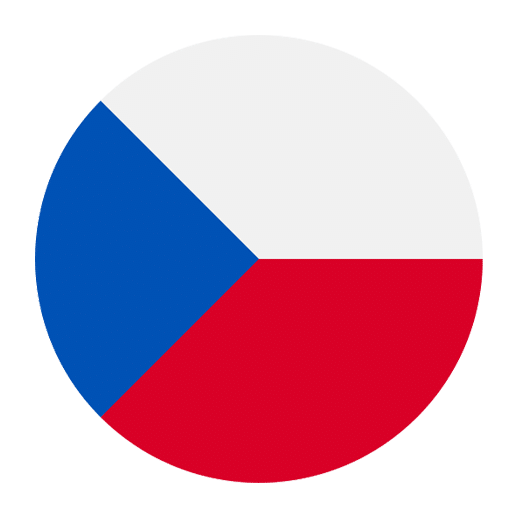Learning a new language can be a challenging yet incredibly rewarding journey. Among the numerous languages one can learn, Czech offers its own unique set of complexities and beauties. Czech is a Slavic language, and mastering it can be particularly beneficial for those interested in Central European culture, history, and travel. One highly effective tool for learning Czech—or any language, for that matter—is the mind map. This versatile tool can help you organize information, improve memory retention, and make the learning process more engaging.
What is a Mind Map?
A mind map is a visual representation of information that starts with a central idea and branches out into related topics, subtopics, and details. It’s an excellent way to organize information in a way that mirrors how our brains naturally process and recall data. Mind maps leverage the power of visuals, colors, and associations, making them a perfect tool for language learning.
Why Use Mind Maps for Learning Czech?
Mind maps can be particularly beneficial for learning a complex language like Czech for several reasons:
1. Visual Learning: Mind maps use images, colors, and spatial arrangement to help you better retain information.
2. Contextual Learning: They allow you to see how different words and phrases connect, giving you a better understanding of contextual usage.
3. Organization: Mind maps help you organize vocabulary, grammar rules, and other language aspects in a coherent, easily digestible format.
4. Engagement: Creating mind maps can be a fun and engaging way to study, making the learning process more enjoyable.
Getting Started with Mind Maps
Tools You’ll Need
Before you start creating mind maps for your Czech learning journey, you’ll need some basic tools:
1. Paper and Pens: Traditional paper and colored pens or pencils can work perfectly well.
2. Digital Tools: There are several mind mapping software options available, such as MindMeister, XMind, and FreeMind. These tools offer the added benefit of being able to easily edit and expand your mind maps.
3. Reference Material: Have your Czech textbooks, dictionaries, and online resources handy.
Creating Your First Mind Map
Here are the steps to create a basic mind map to start learning Czech:
Step 1: Choose a Central Topic
Begin with a central topic. For your first mind map, you might choose something broad like “Czech Language.” Write this in the center of your page or digital canvas.
Step 2: Add Main Branches
From your central topic, draw lines branching out to main categories. For the Czech language, these might include:
– Vocabulary
– Grammar
– Pronunciation
– Common Phrases
– Culture
Step 3: Add Sub-Branches
From each main branch, add sub-branches to break down the information further. For example, under “Vocabulary,” you might have sub-branches for:
– Nouns
– Verbs
– Adjectives
– Common Expressions
Step 4: Add Details
On each sub-branch, add the relevant details. Under “Nouns,” you could list specific Czech nouns along with their English translations and perhaps an image to help with memorization.
Step 5: Use Colors and Images
Enhance your mind map with colors and images. Use different colors for different branches to make it visually appealing and easier to navigate. Images can also help in associating words with their meanings.
Using Mind Maps for Different Aspects of Czech
Vocabulary
One of the most effective ways to use mind maps is for vocabulary building. Here’s how you can structure a vocabulary mind map:
1. Central Idea: Start with a central idea like “Czech Vocabulary.”
2. Main Branches: Create branches for different categories such as “Food,” “Travel,” “Daily Activities,” etc.
3. Sub-Branches: Under each category, add sub-branches for specific words. For example, under “Food,” you might have “Fruits,” “Vegetables,” “Meats,” etc.
4. Details: For each word, add the Czech term, its English translation, and an image if possible. You can also include example sentences to show usage.
Grammar
Grammar is another crucial aspect of learning Czech, and mind maps can help you organize and understand the rules better.
1. Central Idea: Start with “Czech Grammar.”
2. Main Branches: Create branches for different grammar topics such as “Nouns,” “Verbs,” “Adjectives,” “Sentence Structure,” etc.
3. Sub-Branches: Under each main branch, add sub-branches for specific rules. For example, under “Nouns,” you might have “Gender,” “Cases,” “Plurals,” etc.
4. Details: Add specific rules, examples, and exceptions. Use colors to differentiate between different rules or categories.
Pronunciation
Pronunciation can be particularly tricky when learning Czech, but mind maps can help you break it down.
1. Central Idea: Start with “Czech Pronunciation.”
2. Main Branches: Create branches for different aspects of pronunciation such as “Vowels,” “Consonants,” “Stress,” and “Intonation.”
3. Sub-Branches: Under each main branch, add sub-branches for specific sounds or rules. For example, under “Vowels,” you might have “Short Vowels,” “Long Vowels,” and “Diphthongs.”
4. Details: Add specific pronunciation guides, phonetic spellings, and audio examples if possible. Use images of the mouth and tongue positions to aid in understanding.
Common Phrases
Learning common phrases can be very useful, especially if you plan to travel to the Czech Republic.
1. Central Idea: Start with “Common Czech Phrases.”
2. Main Branches: Create branches for different scenarios such as “Greetings,” “Shopping,” “Dining,” “Asking for Directions,” etc.
3. Sub-Branches: Under each main branch, add sub-branches for specific phrases. For example, under “Greetings,” you might have “Hello,” “Goodbye,” “How are you?” etc.
4. Details: Add the Czech phrase, its English translation, and phonetic spelling. You can also include audio clips to practice pronunciation.
Culture
Understanding the culture is an important part of learning any language. A mind map can help you explore various cultural aspects of the Czech Republic.
1. Central Idea: Start with “Czech Culture.”
2. Main Branches: Create branches for different cultural aspects such as “Traditions,” “Holidays,” “Cuisine,” “History,” and “Famous People.”
3. Sub-Branches: Under each main branch, add sub-branches for specific topics. For example, under “Holidays,” you might have “Christmas,” “Easter,” “State Holidays,” etc.
4. Details: Add specific traditions, historical facts, and cultural practices. Use images, videos, and links to additional resources.
Advanced Techniques
Once you’re comfortable with the basics, you can start incorporating more advanced techniques into your mind maps.
Interconnected Mind Maps
Create interconnected mind maps for a more comprehensive learning experience. For example, you can link your “Vocabulary” mind map with your “Grammar” mind map to see how certain words are used in sentences.
Interactive Elements
If you’re using digital mind mapping tools, take advantage of interactive elements like hyperlinks, audio clips, and videos. This can make your mind maps more engaging and provide additional resources for learning.
Review and Update
Regularly review and update your mind maps. As you learn more, you’ll find that your understanding deepens and you can add more details or correct any mistakes.
Practical Tips for Using Mind Maps
Start Simple
When you first start using mind maps, keep them simple. Focus on one topic at a time and gradually add more details as you become more comfortable with the process.
Be Consistent
Consistency is key to effective learning. Make a habit of creating and reviewing mind maps regularly. This will help reinforce your learning and make it easier to recall information.
Use Mnemonics
Incorporate mnemonic devices into your mind maps to make it easier to remember information. For example, you can create a visual story around a word or grammar rule.
Collaborate
If you’re learning Czech with others, collaborate on mind maps. This can provide new insights and make the learning process more enjoyable.
Practice, Practice, Practice
Use your mind maps as a tool for practice. Try to recall information from your mind maps without looking at them, and use them to quiz yourself on vocabulary, grammar rules, and pronunciation.
Conclusion
Mind maps are a powerful tool for learning Czech, offering a visual and organized way to absorb complex information. By using mind maps, you can enhance your vocabulary, understand grammar rules, improve pronunciation, and gain a deeper appreciation for Czech culture. Whether you’re a beginner or an advanced learner, incorporating mind maps into your study routine can make the learning process more efficient and enjoyable.
So, grab your pens or fire up your digital mind mapping tool and start creating your first Czech language mind map today. Happy learning!

